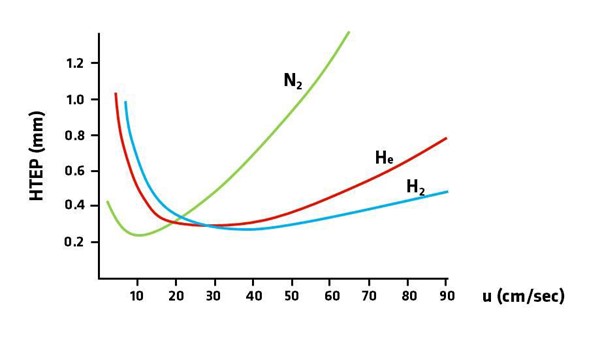Alternative carrier gases for your analysis
The helium shortage and subsequent price increase has been a hot topic for discussion for many years now, so much so it has triggered the use of alternative gases in research applications.
The shortage sparked a sense of worry in many labs where the price of helium was rising due its future supply being uncertain. Nevertheless, with the discovery of a new and substantial helium reserve in Tanzania it is believed that supply worries could be reduced over the next few years. As this ‘gas field’ is a recent discovery many scientists, during the ‘helium crisis’ have been experimenting with new gases and many have achieved successful results by using hydrogen or nitrogen as a carrier gas for chromatography processes. In a recent article published in Laboratory Equipment , Armit Partap, Lead Analyst for Beroe Consulting, states that although hydrogen and nitrogen have both advantages and disadvantages, the cost benefits and supply assurance speaks volumes.
During the chromatography process carrier gas (be it helium, hydrogen or nitrogen) transports the sample and transfers the ions to the chromatograph, hence one of the chief characteristics required for the carrier gas is its inert nature.
 The van Deemter Curve
The van Deemter Curve
Nitrogen, being a non-reactive gas is well suited to being a carrier gas for chromatography processes. High purity nitrogen can be generated from compressed air and by using an in-house gas generator. According to the van Deemter curve, nitrogen provides the best possible separation efficiency at the lowest velocity. Nitrogen is highly abundant and can be produced easily with an on-demand gas generator in comparison to the production costs of helium. In terms of disadvantages, nitrogen does have a high separation time, almost double when compared with helium.
Hydrogen is another contender and again is well suited to be a carrier gas. The van Deemter curve of hydrogen shows a similar pattern to helium. The long flat curve suggests a more stable separation efficiency and resolution compared with nitrogen and helium, over a large range of flow velocity. Hydrogen also allows for increased column life as faster elution and better resolutions prevent the impact of high temperatures. Many scientists in the past have played down the hydrogen option due to its explosive nature, however by generating gas on-demand this fear can be eradicated.
With both hydrogen and nitrogen as your carrier gas you get supply assurance as both these gases can be generated using a gas generator. A gas generator means you can produce gas on-demand as and when required. It generates gas at a consistent purity, at a steady flow and eliminates any safety fears surrounding pressurized cylinders or large volumes of stored gas. Having a gas generator in your lab is also extremely cost efficient over its helium alternative. Helium is procured into cylinders or tanks which incur high costs because of labor, storage and transporting requirements, costs which any new helium reserves will not remove. Again these costs can be successfully mitigated by using a hydrogen or nitrogen gas generator. Usage and cost is highly dependent on many individual and internal factors of a specific working facility but many labs have reported a return on investment in less than a year and a half with a PEAK Scientific gas generator.
Specifically designed and engineered for GC applications, PEAK Scientific have created the Precision series. The Precision series of laboratory gas generators represents the cutting-edge of PEAK Scientific innovation in a robust and dependable gas generator design. The Precision series comprises of nitrogen, hydrogen, zero air and compressed air models at various flow rates, designed as a modular system, these units can be combined to meet the specific needs of your lab.
To avoid price hikes, future potential shortages and increase your labs productivity, you need Precision.
